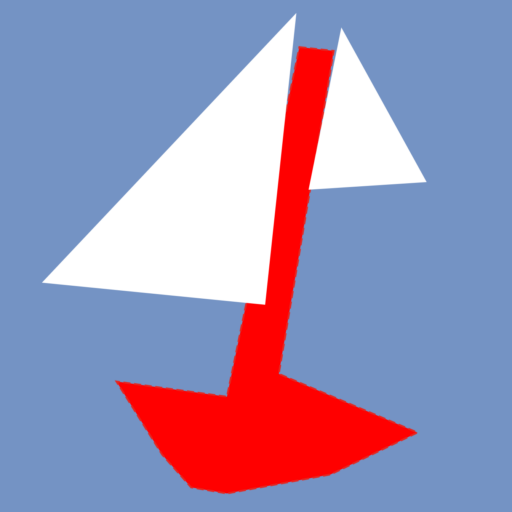Jakob:
As an electrical engineer with electronics construction as a teenage hobby, I naturally cannot leave the boat's sensors and instruments to chance. When we bought the Turid II I had no experience at all with modern boat electronics but after many hours of thinking this winter things are starting to clear up.
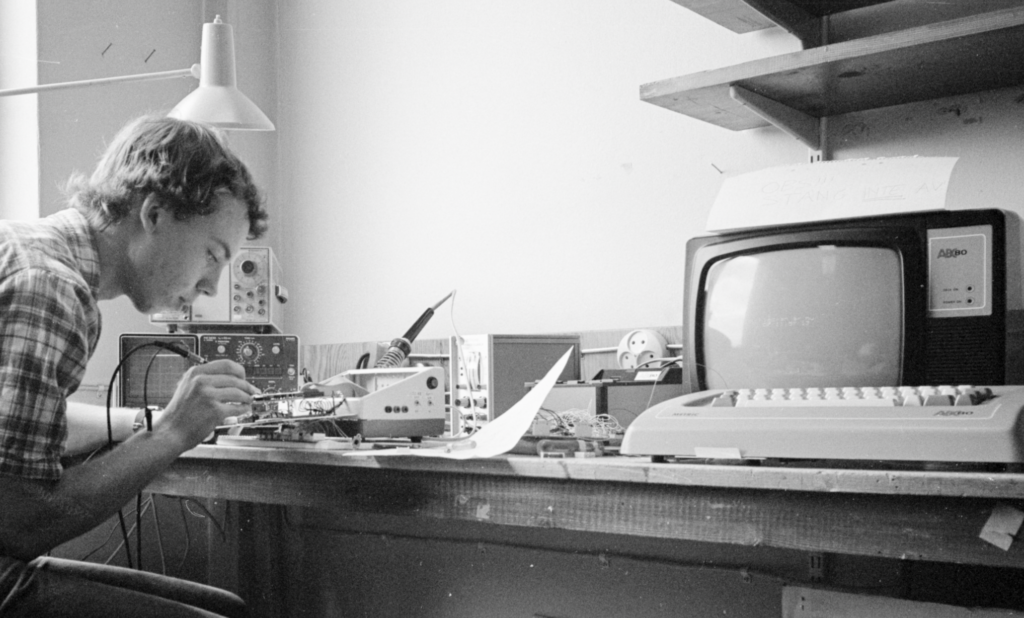
Starting point
When purchased, our Monsun 31 was equipped with two chartplotters – a 7″ in the cockpit and a 6″ in the hull. Charts and position are shown on these. In addition, there was an AIS, i.e. a radio unit that sends the boat's position to other boats and ships in the vicinity to reduce the risk of collision. There was also a VHF radio equipped with DSC, i.e. automatic emergency call. In the top of the mast, an anemometer with its own indicating instrument in the cockpit and in the hull two sonar transducers – one connected to the chartplotters and one to a separate instrument in the cockpit.
Chartplotters, AIS and VHF radios were interconnected.
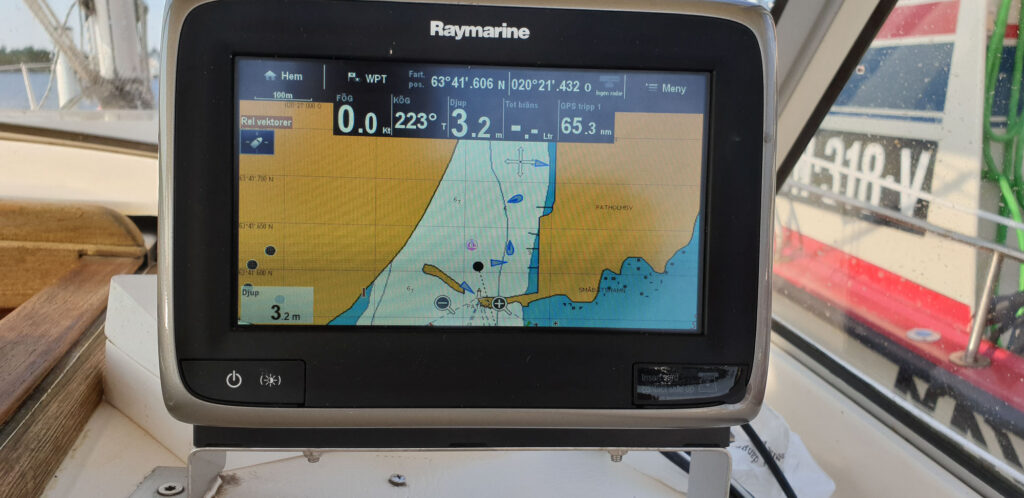
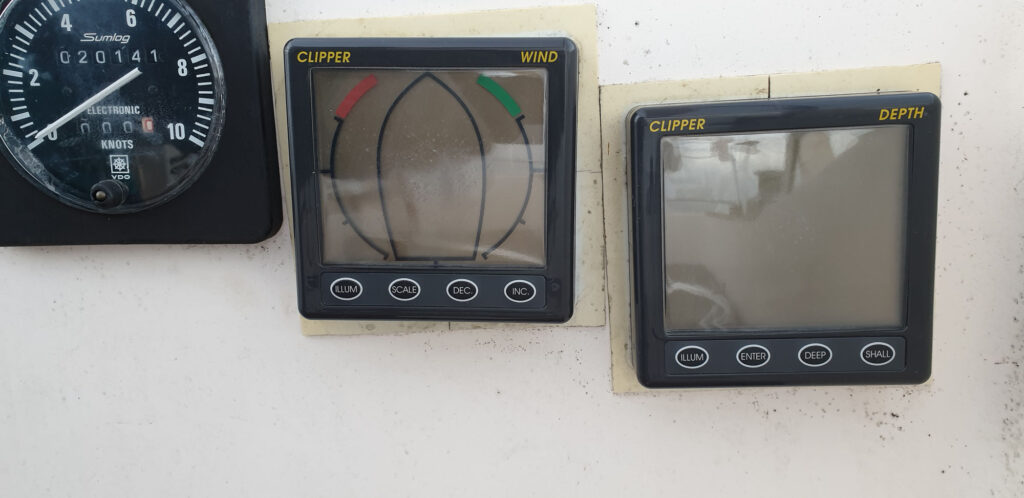
Instrumentation upon purchase
Raymarine A78 chart plotter with echo sounder
Raymarine A65 chart plotter
Garmin AIS 600
M-tech MT-500 VHF radio
NASA Clipper Wind v.1 anemometer
NASA Clipper Depth Sonar
What do I want?
I haven't tinkered with permanently mounted boat electronics since the 1970s electromechanical Seafarer sonar. 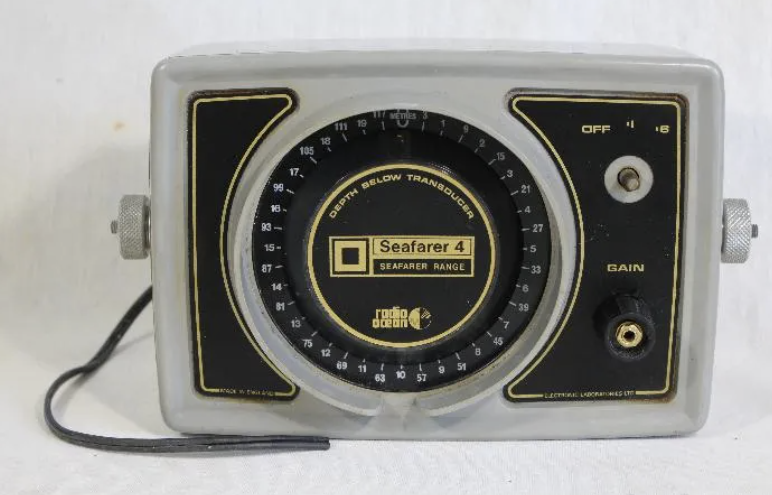
What we had in the Turid II was uncharted territory and I didn't have time to delve into the thicket of clutches before the boat was picked up in September.
After the autumn meetings were completed, I got back into the boat in November and started mapping. There were several visits interspersed with thinking. What kind of maniacs did we have in the boat anyway? How were they connected to each other? Was it possible to do differently?
NMEA2000
I quickly realized that the foundation of a modern system is interconnection in a NMEA2000 network. All sensors send information out into the network and all displays can flexibly display data from the sensors. In the network, there is no central control unit, but all units can basically talk to everyone.
NMEA2000, or N2K as it can be abbreviated, is basically the same as CAN for the automotive industry, which was developed in the 1980s to e.g. send signals from brake sensors to the control unit for anti-lock brakes, or to quickly deploy an airbag in the event of a collision. Since the automotive industry has large development resources, CAN is very well developed and stable and thus worth applying in other industries as well.
Here there is a technical document that describes the basis of NMEA2000 and CAN.
Bargain
At the same time as I got used to the boat's clutches, I began to explore the market. Maybe there was something exciting on the Block?
Yes indeed. I made a bargain on the block!
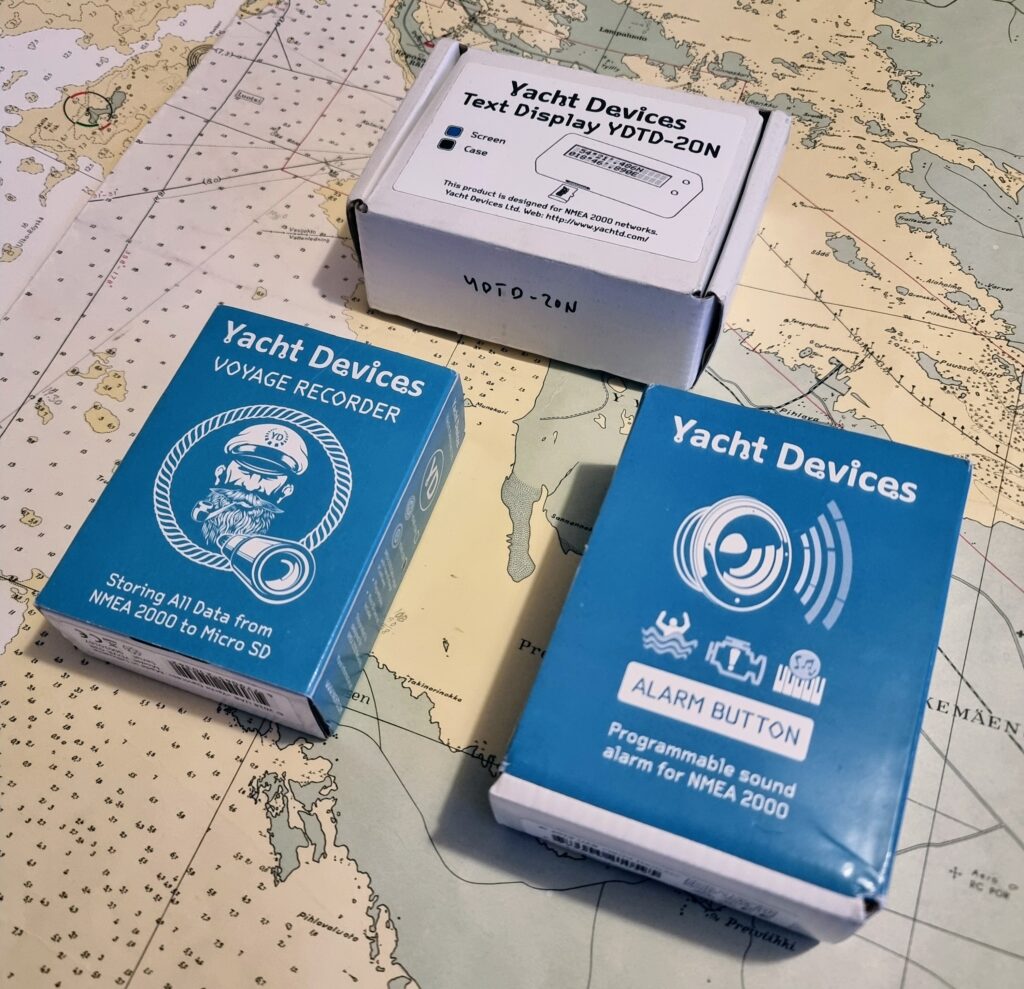
One "Alarm button", one "Voyage recorder" and one "Text display”, all intended for NMEA2000. Not that I knew I needed them, but I realized it could be something fun!
I started sketching how to connect them to the boat and the result was that a lot of other things also need to change. A completely new network is beginning to emerge. More on that in Part 2.
